| Defects |
Probable causes for the defect |
Design for Maintainability (DfM) Guidelines |
Overheated / burnt
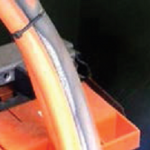 Burnt cable Raceway exposed to sun
|
- Narrow cross section or excessive length causes resistance heating.
- Exposed to direct sunlight or other heat sources.
- Short circuit or ground fault.
- Overloaded busbar. K-rated transformer can reduce harmonics.
|
Design
- Comply with the requirements of electrical installations as per BS 7671:2008+A3:2015, SS CP 5:1998, NFPA 70 [5]; including the location and number of power points.
- Ensure switchboards have adequate space and access for operation and maintenance.
- Specify suitable switch closets with regard to moisture exposure conditions.
- Refer to the definition of types and functionality of RCCBs and specifications for RCBOs as per SS 480:2016 (IEC 61009-1:2010+AMD1:2012+AMD2:2013 CSV BS EN 61009-2-1:1995).
- Provide sub-metering system with remote measurement capability and link to BMS/EMS to track energy consumption data trends [6].
Construction
- Conform to the guidelines for construction and compliance inspection of electrical connections and earthing thereof (BS 1363-4:2016, SS 403:2013).
- Refer to BS 8512:2008 for storage, handling and installation of power cables on wooden drums.
- Install sub-metering system with remote measurement capability and link to BMS/EMS to track energy consumption data trends [6].
- All accessible metal parts of connection units should be in electrical contact with the earthing terminal(s) (BS 1363-4:2016, SS 403:2013).
- Conform to the maintenance of electrical installations as per BS 6423:2014, BS 6626:2010, SS 538: 2008, [3;7].
- Check for insulation damages (e.g. cracks, blisters, warping) caused by overheating, physical impact or by spillage of cleaning chemicals.
- Check for potential short circuits or ground faults. Ensure that switchboards are not exposed to direct sunlight or alternative heat sources.
- Conduct annual shutdown to eradicate hot spots along the distribution network as witnessed by the owner and certified by a Licensed Electrical Worker (LEW).
- Provide necessary warning notices/labels at switchboards (e.g. shock hazard warnings).
|
Corroded metal parts
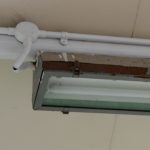 Corroded light fittings due to poor indoor environment regulation 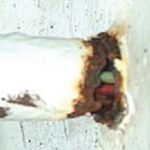 Corroded metal conduit 
Corroded busbar trunking
|
- Water seepage due to poorly designed / finished joint.
- Use of unsuitable lubricant, pulling or cleaning agent.
- Lashing water jet for cleaning enters through end / joints not properly designed or sealed.
- Adjacent structure is not water resistant.
- Galvanic corrosion.
|
Damaged electrical box
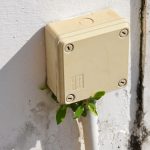 Damaged electrical box due to biological growth 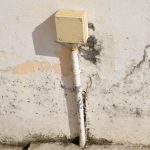 Damaged electrical box due to corrosion and impaired safety |
- Intermediate (junction or pull) box – not made of rust proof material.
- Knockouts are made using improper tools or methods. Should be done before mounting.
- Knockouts are made forcefully big to accommodate too many cables.
- Screw / cover missing during careless installation or maintenance.
|
| Damaged insulation

Worn insulation
|
- Softened from prolonged exposure to high temperature (>70°C)
- Use of unsuitable lubricant, pulling or cleaning agent.
- Narrow cross section or excessive length causes resistance & heating.
- High inrush current from short circuit or ground fault.
|
| Mechanical damage |
- Movement or dangling if support is not secured or insufficient.
- Broken / loose supports from excessive corrosion.
- Excessive tension – careless workmanship.
- Too close to structural frame or no hangers to allow movement. Damage is more prominent in absence of expansion joint or open run.
- Inadequate protection from crush, impact or abrasion.
- Sharp or too many bends, pulled over excessive length. Intermediate junction / pull box can solve such problem to a great extent.
- Nicks during careless cutting results in broken wire beneath the cover.
- Damaged during maintenance of other services running too close / interfering. Result of poor planning.
- Conductor not firmly secured – pulsating current causes sway.
- Missing cover of junction/ pull box (H17) encourages vandalism. Esp. if the cables can be pulled easily due to gap between cable and knockouts.
|
References
[1]
Normative References/Standards Referred to for Air Handling Unit and Fan Coil Unit






